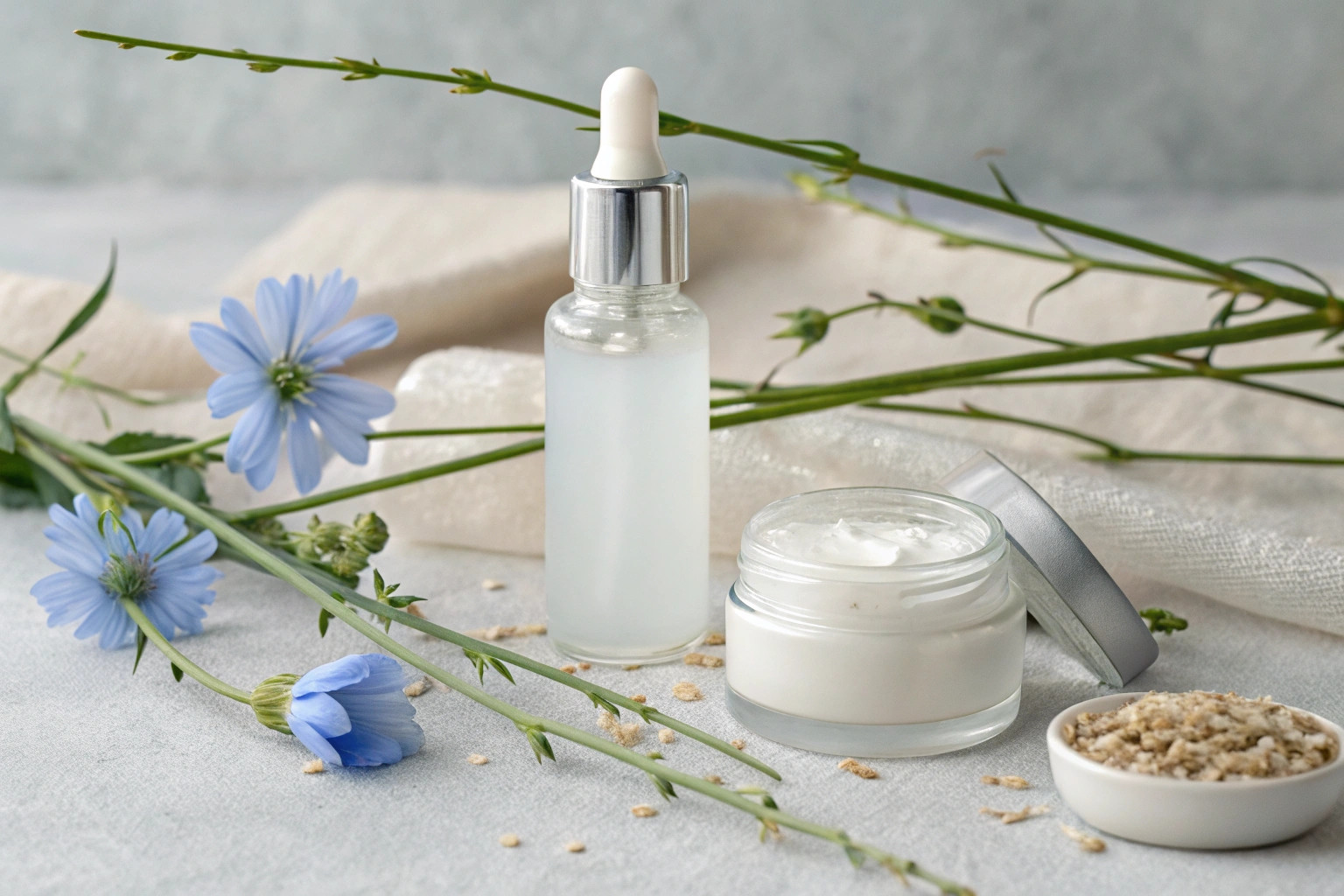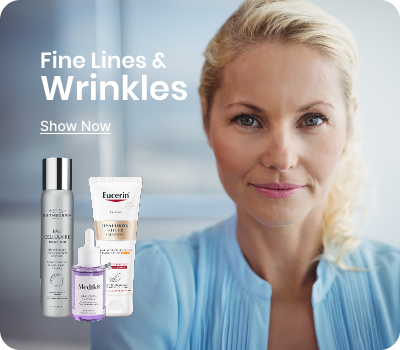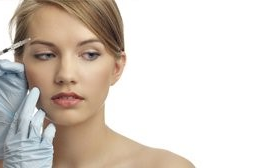
From cleansers claiming to balance your microbiome to serums loaded with live cultures, the skincare world in 2025 is buzzing with “biotic” beauty. Consumers are no longer just seeking hydration or anti-ageing benefits—they want harmony with the invisible ecosystem that lives on their skin. Enter the skin microbiome: a complex community of microorganisms (bacteria, fungi, viruses) that plays a vital role in skin health.
The popularity of probiotics, prebiotics, and postbiotics in skincare has exploded, promising everything from fewer breakouts to stronger skin barriers. But what does the science say? Is biotic skincare the miracle it’s marketed to be—or just another trend riding on gut health hype?
In this article, we’ll break down what each type of “biotic” does, what’s backed by research, and how to spot real value in a growing crowd of microbiome-focused beauty products.
What Is the Skin Microbiome and Why Does It Matter?
The skin microbiome is the ecosystem of microbes that lives on the surface of your skin. Far from being harmful, many of these microbes are essential to your skin’s health. They help:
- Protect against harmful pathogens
- Regulate inflammation
- Support the skin’s natural barrier
- Maintain moisture balance
A healthy skin microbiome keeps the skin calm, resilient, and better able to fend off irritants and infections. However, factors like over-cleansing, harsh products, antibiotics, diet, and even stress can disrupt this delicate balance, leading to dryness, sensitivity, acne, eczema, and more.
This is where the idea of biotic skincare enters—products designed to nurture or restore your skin’s natural microbial balance using probiotics, prebiotics, and postbiotics.
Probiotics in Skincare: What the Research Really Says
What Are Probiotics?
Probiotics are live microorganisms, most commonly specific strains of beneficial bacteria, that are believed to provide health benefits when applied or ingested in adequate amounts. In the context of skincare, probiotics are intended to support the skin’s microbiome—the diverse ecosystem of bacteria, fungi, and other microbes that live on the surface of the skin. These microorganisms play a key role in maintaining skin health, from managing inflammation to reinforcing the skin barrier and defending against pathogens.
When used in skincare products, probiotics are thought to reintroduce “good” bacteria to help restore microbial balance, especially when the skin is compromised due to over-cleansing, pollution, or chronic skin conditions. Some formulations aim to “seed” the skin with these helpful microbes to crowd out harmful bacteria and reduce inflammation.
What’s the Evidence?
Though the concept of applying live bacteria to the skin might seem unconventional, a growing body of research suggests that topical probiotics can be beneficial for certain skin conditions:
- Acne: Certain strains of probiotics have shown potential in reducing inflammation and inhibiting acne-causing bacteria like Cutibacterium acnes. Probiotics may also support a healthier skin barrier, making the skin less reactive and prone to breakouts.
- Eczema and Rosacea: Some studies have reported reduced redness, dryness, and irritation in people with inflammatory skin disorders when using probiotic-enriched products. By calming immune responses and strengthening the barrier, probiotics can help reduce flare-ups.
- Sensitive or Reactive Skin: Probiotic skincare may improve skin tolerance and decrease sensitivity by modulating the immune response and reinforcing the skin’s natural defence system.
Limitations to Keep in Mind
Despite their promise, there are several limitations to using probiotics in skincare. The most notable challenge is stability. Live probiotics are highly sensitive to environmental factors like heat, oxygen, light, and preservatives. These conditions can render them inactive before the product even reaches your skin. As a result, many so-called “probiotic” products on the market don’t actually contain live bacteria but rather ferment filtrates or lysates—inactive bacterial components, also known as postbiotics.
Pro tip: To find genuine probiotic skincare, look for products that specify live and stabilised cultures, possibly requiring refrigeration, and always check expiration dates.
Prebiotics: Feeding Your Skin’s Friendly Bacteria
What Are Prebiotics?
Prebiotics are non-digestible compounds—often plant-based fibres or sugars—that act as a food source for beneficial microorganisms. While they’re most commonly discussed in relation to gut health, prebiotics are now a rising star in skincare. Unlike probiotics, which introduce new bacteria, prebiotics nourish the healthy bacteria already living on your skin, helping them thrive and maintain a balanced ecosystem.
Think of them as fertiliser for your skin’s microbiome—providing the nutrients good microbes need to flourish, crowding out harmful bacteria, and reinforcing the skin’s natural defences.
Common Prebiotic Ingredients in Skincare
Many skincare brands are now incorporating prebiotics into cleansers, moisturisers, serums, and masks. Look for ingredients such as:
- Inulin (often derived from chicory root)
- Xylitol (a sugar alcohol with microbiome-friendly properties)
- Fructooligosaccharides (FOS)
- Alpha-glucan oligosaccharide
- Oats and oat derivatives (which offer both prebiotic and soothing properties)
These ingredients work synergistically to support microbial balance without irritating the skin.
Benefits of Prebiotics for Skin
Adding prebiotics to your skincare routine can offer several notable benefits:
- Support microbial diversity and help keep harmful bacteria in check
- Reduce sensitivity, irritation, and dryness
- Enhance the skin barrier, improving resilience to environmental stressors
- Boost hydration and texture, leaving skin smoother and more comfortable.
Why Choose Prebiotics?
Prebiotics are stable, non-living, and highly compatible with most skincare formulations. Unlike probiotics, they aren’t sensitive to temperature or preservatives, making them easy to incorporate into daily routines. Their gentle nature also makes them a great option for sensitive, reactive, or compromised skin.
Bottom line: If you're looking to support your skin’s microbiome without the complications of live bacteria, prebiotics are a simple, effective, and science-backed choice.
Postbiotics: The New Star in Microbiome Beauty
What Are Postbiotics?
Postbiotics are the non-living metabolites or byproducts produced when probiotic bacteria ferment nutrients. Unlike probiotics, which are live microorganisms, postbiotics contain no live cultures—instead, they include biologically active compounds such as peptides, enzymes, short-chain fatty acids, amino acids, and cell wall fragments. These compounds may not be “alive,” but they can still offer powerful benefits for the skin, particularly in soothing inflammation, supporting hydration, and enhancing skin barrier health.
In skincare, postbiotics are becoming a favoured alternative to probiotics because they deliver many of the same results, but with greater formulation stability and longer shelf life. They don’t require refrigeration, are less sensitive to heat and oxygen, and can be more reliably incorporated into various product types, from serums to moisturisers.
Key Postbiotic Ingredients to Look For
- Lactobacillus ferment lysate
- Bifida ferment lysate
- Yeast ferment extract
- Short-chain fatty acids (e.g., butyrate)
- Peptidoglycans (bacterial cell wall components)
These ingredients have been shown to calm irritated skin, improve moisture retention, and support barrier repair, making them excellent for sensitive, dry, or inflamed skin types.
Why Postbiotics Are Trending in 2025
The rise of postbiotics in 2025 reflects a growing interest in microbiome-friendly products that are both effective and safe for sensitive skin. Emerging research indicates that certain postbiotics can:
- Reduce redness and inflammation
- Improve hydration and elasticity
- Enhance the skin’s natural defence mechanisms
- Provide antioxidant and anti-ageing benefits
- Offer mild protection against UV-induced skin damage
Interestingly, many luxury skincare lines that advertise “probiotic” benefits are actually postbiotic-based, using ferment lysates or filtrates to achieve results—without the complications of keeping live bacteria stable. This makes postbiotics an appealing, science-backed option for those looking to nurture their skin’s microbiome without the risks or limitations of live cultures.
Is Biotic Skincare Right for You?

While biotic skincare ingredients can offer transformative benefits, it’s important to remember that biotic skincare is not a one-size-fits-all solution.
You may be an ideal candidate for biotic skincare if you:
- Have sensitive, reactive, or easily irritated skin that struggles to tolerate strong actives like retinoids or acids.
- Experience chronic skin conditions such as eczema, rosacea, or acne, where inflammation and barrier dysfunction are present.
- Notice your skin feels tight, dry, or stripped after cleansing, especially when using foaming or exfoliating products.
- Are recovering from overuse of harsh treatments and want to focus on barrier repair, hydration, and soothing.
By supporting your skin’s native microbiome, biotic products can help reduce redness, calm flare-ups, and improve your overall skin resilience.
When to Be Cautious
Even though biotic ingredients are generally well-tolerated, there are a few situations where caution is warranted:
- Don’t overdo it. Layering multiple microbiome-focused products can overwhelm the skin or cause ingredient conflicts.
- If your skin barrier is severely damaged (cracked, inflamed, or stinging), start with barrier-repair basics like ceramides, cholesterol, and fatty acids before introducing biotics.
- Always patch test new biotic products on a small area first—especially probiotic-based formulas—as they can sometimes trigger a purging phase or temporary sensitivity.
Tip: Start Slow and Observe
Begin with one microbiome-friendly product at a time, such as a serum or moisturiser, and use it consistently for 1–2 weeks before adding others. Monitor how your skin reacts. Improvement may be gradual but meaningful, especially in terms of hydration, comfort, and reduced irritation. With a thoughtful approach, biotic skincare can become a valuable tool in your skin health toolkit.
Red Flags: How to Spot Microbiome Marketing Hype
The surge in popularity around microbiome skincare has led to exciting innovations—but it has also opened the floodgates to marketing exaggeration, greenwashing, and misleading product claims. As more consumers seek biotic skincare, some brands are capitalising on the trend with flashy language and vague science. Knowing how to spot marketing red flags can help you make smarter, skin-friendly choices.
Marketing Red Flags to Watch For
Here are some common warning signs that a product may be more hype than help:
- “Live probiotics” in products that are shelf-stable, unrefrigerated, or lack expiration dates. Live cultures are sensitive and difficult to preserve—without proper storage or formulation, they’re unlikely to remain viable.
- Generic terms like “microbiome-friendly” or “skin-balancing” with no clear explanation or ingredient support.
- No strain specificity. A label that just says “probiotics” or “ferments” without naming the bacteria (e.g., Lactobacillus rhamnosus) may be trying to ride the trend without offering true benefits.
- Buzzwords over benefits. If a product talks about “harmony,” “balance,” or “natural bacteria,” but doesn’t explain how it works or what it actually contains, be sceptical.
What to Look For Instead
To separate science from spin, focus on:
- Scientific names like Lactobacillus plantarum, Bifida ferment lysate, or Saccharomyces ferment filtrate, which have been studied for their effects on the skin.
- Transparent ingredient lists that include prebiotics, postbiotics, or clearly defined ferments.
- Clinically tested formulas, ideally supported by dermatologist testing or third-party studies.
- Certifications or reputable labelling, such as “postbiotic complex,” “probiotic lysate,” or “microbiome-safe.”
Don’t be swayed by shiny packaging or trendy buzzwords. Educated skincare choices come from understanding ingredients and demand for transparency. Let science—not slogans—guide your microbiome journey.
The Gut-Skin Connection: Does Oral Supplementation Help?
While topical skincare is crucial, glowing skin starts from within—and more research is revealing just how powerful your internal microbiome can be. The relationship between the gut and the skin is known as the gut-skin axis, a complex communication network that links gut health with skin inflammation, hydration, and immune response.
When the gut microbiome is out of balance—often due to stress, diet, antibiotics, or illness—it can trigger systemic inflammation, which may show up on your skin as acne, rosacea, eczema, or increased sensitivity. Conversely, a healthy gut can promote calm, hydrated, and more resilient skin.
How Oral Probiotics Can Benefit Your Skin
Oral probiotic supplements may support skin health in a number of ways:
- Reduce inflammation throughout the body, potentially calming chronic skin conditions like acne and rosacea.
- Improve skin hydration and elasticity by influencing moisture retention and collagen support.
- Support the skin barrier by regulating immune responses and reducing trans-epidermal water loss.
- Help manage symptoms of eczema and acne by modulating the gut’s influence on the immune system and hormone levels.
Several bacterial strains have shown promise in clinical studies for skin benefits. Look for probiotics containing:
- Lactobacillus rhamnosus
- Lactobacillus paracasei
- Bifidobacterium breve
- Lactobacillus plantarum
Smart Supplementation Strategy
If you're dealing with persistent breakouts, flare-ups, or overly reactive skin, combining biotic topical skincare with a high-quality oral probiotic can create a more holistic, inside-out approach. Choose supplements from reputable brands that clearly state the strain type, CFU count, and formulation date, and be patient—results often take several weeks.
A healthy gut supports healthy skin. Don’t underestimate the impact of digestion, diet, and probiotics on your complexion.
Conclusion: Biotic Skincare—Smart Science or Trendy Talk?
The microbiome skincare movement isn’t just hype—it’s rooted in promising science. But like any trend, it can be misleading when misused.
Here’s what we know:
- The skin microbiome matters, especially for barrier function, hydration, and inflammation.
- Probiotics, prebiotics, and postbiotics each have unique strengths.
- Postbiotics are emerging as the most stable and evidence-supported ingredients in topical formulations.
- Not all “biotic” skincare is created equal—learn to read the labels, not the headlines.
Ultimately, biotic skincare can be a valuable addition to your routine when used wisely. Start simple, prioritise quality over quantity, and don’t hesitate to consult with a dermatologist—especially if your skin is sensitive or reactive.





